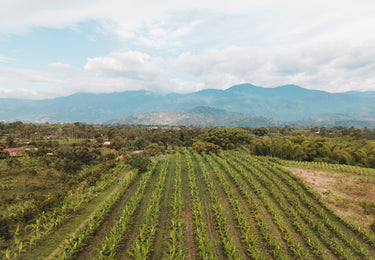
You’ve likely heard the phrase “you are what you eat,” alluding to the impact of the foods we eat on the form and function of our bodies, but have you ever thought about what your food eats? As author Michael Pollan put it in his award-winning book “In Defense of Food: An Eater’s Manifesto,” more specifically, “you are what what you eat eats,” meaning wherever/however our food derives its nourishment is equally important if not paramount to the nutrient quality and density (or lack thereof) present in the foods we consume. What happens then when at the very root, our food is no longer absorbing the vast array of nutrients required to support healthy plants and therefore healthy bodies? Thanks in large part to modern industrial agriculture practices, we now have an abundance of calories at our disposal, but much of it is severely lacking in vital nutrients. We’re also seeing a concurrent increase in chronic disease that closely follows the rise of these practices. So what gives? How did we get here, and how do we find a better way forward?
Let’s dig in and first take a deeper dive into the “what our food eats” piece of the puzzle. A plant’s intricate dance from seed to sprout to harvest involves a unique and complex system of soil, sun, and water. While it may seem straightforward enough on the surface, the true beauty and complexity is what lies below. Soil in and of itself is a vast and interconnected ecosystem comprised of mineral decomposition from rocks and other organic matter, microbial activity, fungal friends, earthworms and other useful decomposers and more, all working symbiotically to excavate, digest, and shuttle nutrients to plant roots in order to provide the ideal robust growth environment. This vast network of microbial and fungal activity in soil is to plants what our digestive system is to our bodies, facilitating the breakdown and absorption of vital nutrients needed for growth and vitality. The more microbial activity in the soil, the more nutrient opportunity for the plant. To put it simply, the health of the soil = the health of the plant.
Modern industrial agriculture, which encompasses the practices of mono-cropping (planting one singular crop type over and over), crop modifications (genetically altering crops to adjust for higher yields, built-in pest control, and other more “favorable” traits), heavy ground tillage (regular breaking down of soil), and the frequent use of chemical herbicides, fungicides, and pesticides began to take root in the late 1800s to early 1900s with the rise of the industrial revolution, which brought newly invented machinery with it and made farming quicker and easier, thus leading to higher crop yields and faster field turnover. Coupled then with the use of chemical inputs to increase crop production and provide pest control, it seemed like a win-win situation. More food, greater reliability, more protection. But more is not always “more.”
The proof is in the soil. Over time, this rapid and consistent turnover of land with these newly adopted industrial farming standards began to reveal something else: a significant decline in the nutrient density and diversity of the soil. Over-tilling and the modern use of chemical fertilizers, pesticides, and herbicides to synthetically boost crop production in otherwise dead soil has become a vicious cycle. While these practices can “boost” production initially, they also become dependent on one another to the point that the soil is rendered dead and useless and it's on to greener pastures, so to speak. The regular use of chemical herbicides and pesticides greatly diminishes the soil’s natural microbial ecosystem, along with regular tillage that breaks up root systems and compacts soil, making it more difficult for roots to deepen and water to get through, further disrupting microbial activity. Microbial balance suffers, soil loses its natural defenses, nutrient availability plummets, and the vicious cycle continues.
This is where regenerative agriculture comes in. What were once some of the most common farming methods used for centuries by our ancestors in cyclical alignment with nature has now become a vital turning point in the fight for revitalizing tired and depleted ecosystems. It’s not so much that the regenerative principles are new to the scene, but the conversation has had to take center stage as soil robustness the world over continues to rapidly diminish. It’s no longer just a conversation about organic vs conventional, or even sustainable, but must go deeper to look at the nature of the soil and how it can be rebuilt, cultivated, and nurtured.
The core facets of regenerative agriculture focus on a strategic and dynamic mix of crop diversity, crop rotation, ground cover, no or very little tilling, and oftentimes the introduction of grazing cattle and other animals in a strategic way. All of these practices facilitate and encourage a robust diversity of microbes and minerals and a greater concentration of carbon and water absorption that enlivens and enriches the soil that feeds our food.
The beauty of a nature-led regenerative system is that robust microbial activity helps to naturally balance the soil and defend against pests, rendering chemical pesticides and fertilizers unnecessary and producing a more nutrient dense soil to boot. It’s all built in. Just like a healthy, well supported body is better suited for fighting ailments and whatever else life throws at it, a truly healthy soil has the tools it needs to keep itself healthy and protected. Regenerative farms have also shown time and again that crop yields are on par with if not higher than their conventional farming counterparts.
Beyond just the betterment of the soil, regenerative agriculture makes food better by contributing to the ideal nutritional uptake of plants, which then translates to more nutrient density for the consumer (animal or human). Regeneratively grown foods boast higher phytochemical, mineral, and vitamin content, and these play a strategic role in the actual flavor robustness, so they not only are better for you, but they taste better. Nutrients that come directly from the food itself via the health of the soil is leaps and bounds more beneficial to the body than nutrients synthetically added as an afterthought to an otherwise nutrient-stripped food.
Regenerative agriculture also provides a better, safer environment for farmers and workers and improves air and water quality for all (no toxic chemical fallout or seepage into air and water supplies). It’s better for soil, plant, planet, and people. We’d also propose that there’s an added element of knowing more purposefully where your food comes from and the processes involved in creating it that leads to a greater appreciation for what’s on your plate. Food that is known in this way just tastes better.
Here at Artisan Tropic, we’re passionate about building a better chip from the ground up, starting with a love and humble appreciation for the land on which our plantains and cassava are grown. We’re not just in the business of creating better snacks, we’re in the long game business of making food better for all: better for you and better for the planet. We do this by sourcing from regenerative farms. We’re honored to partner with those pioneers doing the hard, intentional work of rebuilding, recultivating, regenerating the land in order to make food better today and make farming possible for the future. This is what it means to trade up your chip: making conscious choices today to support a better, safer, more nutrient dense food system. It means the world to us (truly, we’re in the business of loving our planet!) to have you here in support of this mission.
How else can you support more regenerative practices? It’s not about perfection, but striving to make more intentional food choices that support a regenerative system. Every purchase is a vote with your dollars. This isn’t just food that fuels you today, but food that’s making big, impactful strides to fuel the future of our health and our planet. You can start by searching locally for a farmer or rancher near you who might already be utilizing regenerative practices. See how you can support them.
Look for other brands/farmers/ranchers who are having the conversation and sharing about regenerative agriculture practices. This is passionate, important work: those who are doing it are talking about it, putting it on their labels, sharing about it ‘til the cows come home, so it’s not hard to spot!
Get your hands dirty! Certainly you can embark on your own gardening endeavors, even just a small container or windowsill garden, but if that’s not quite your cup of tea (er, dirt?), composting is a great way to support a richer and more robust microbial environment. There are compost programs in some areas that will collect your weekly food scraps and turn them into compost for the community. These can be a great way to reduce food waste and contribute to greater soil health.
For more information on the incredibly important work of regenerative practices, here are some great resources to get started:
Books:
Websites/Organizations:
https://regenorganic.org/why-regenerative-organic/
Rodale Institute
Check out this incredible study
Documentaries:
Kiss The Ground is an excellent documentary to watch
This blog post was written by Ashley Castle





